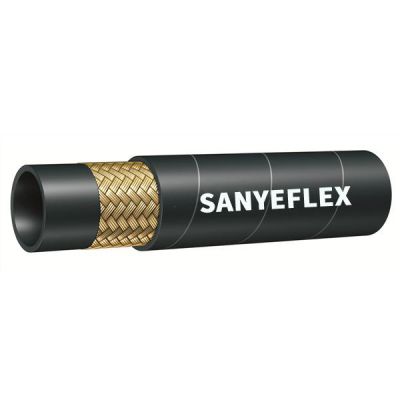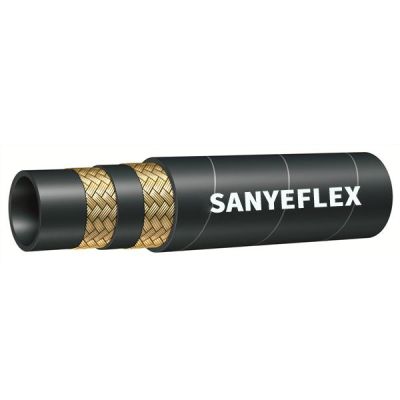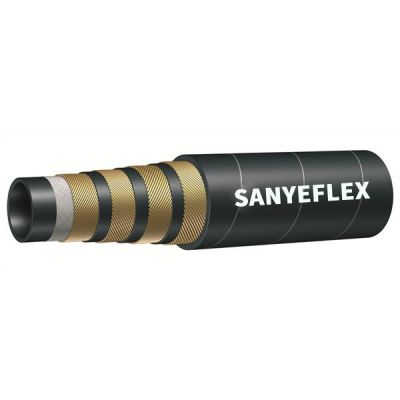Nov. 13, 2024
When it comes to understanding the intricacies of automotive air conditioning systems, one important component that often goes unnoticed is the AC hose. Auto AC hoses play a crucial role in maintaining the optimal performance of the air conditioning system, ensuring that cool air reaches the cabin efficiently. In this comprehensive guide, we will delve into the world of auto AC hoses, exploring their sizes, functions, and the factors to consider when selecting the right hose for your vehicle.
Auto AC hoses are flexible tubes that transport refrigerant, compressed air, and other fluids within the air conditioning system of a vehicle. They act as conduits, connecting various components of the AC system, such as the compressor, condenser, evaporator, and receiver-drier. These hoses are typically made of durable materials like rubber or aluminum, ensuring their ability to withstand the high-pressure environments associated with air conditioning systems.
When it comes to auto AC hoses, size matters. The diameter and length of the hose significantly impact the overall efficiency and performance of the air conditioning system. Choosing the correct hose size is crucial to maintain the proper flow rate of refrigerant and ensure optimal cooling capacity.
Hose Diameter
Auto AC hoses come in various diameters, ranging from small to large. The most common sizes include 5/16 inch, 13/32 inch, and 1/2 inch. The appropriate diameter depends on the specific make and model of the vehicle, as well as the AC system's requirements. Choosing the wrong diameter can result in restricted refrigerant flow, leading to reduced cooling efficiency and potential system damage.
Hose Length
The length of an auto AC hose determines how far the refrigerant must travel within the system. Longer hoses may introduce additional resistance, affecting the system's performance. It is crucial to select the correct length, ensuring that the hose can reach all necessary components without excessive bending or stretching. This helps maintain proper refrigerant flow and prevent unnecessary strain on the system.
When selecting the appropriate size for your auto AC hoses, several factors should be taken into account:
Vehicle Specifications
Each vehicle has unique specifications, including the AC system requirements. Consult the vehicle manufacturer's guidelines or refer to the owner's manual to determine the recommended hose size for your specific make and model. Adhering to these specifications will help ensure optimal performance and compatibility.
System Pressure
Auto AC systems operate under varying pressure levels, depending on the design and refrigerant type. It is essential to consider the system pressure when selecting the appropriate hose size. Higher pressures may require hoses with larger diameters to accommodate the increased flow rate. Conversely, lower pressures may allow for the use of smaller hoses.
Environmental Factors
Environmental conditions, such as temperature and humidity, can impact the performance of an auto AC system. In extreme climates, where the demand for cooling is high, larger hoses may be required to handle the increased refrigerant flow. Additionally, factors like engine heat and exposure to road debris should be considered to ensure the longevity and durability of the hoses.
Selecting the right auto AC hoses involves a careful evaluation of the factors mentioned above. It is crucial to consult with professionals or reputable auto parts suppliers to ensure you make an informed decision. They can provide guidance based on your vehicle's specifications, the AC system's requirements, and environmental considerations.
To ensure the longevity and efficient operation of your auto AC hoses, regular maintenance and inspection are paramount. Here are some tips to keep in mind:
Visual Inspection: Regularly examine the hoses for signs of wear, such as cracks, bulges, or leaks. If any damage is detected, it is essential to replace the hose promptly to prevent further issues.
Refrigerant Levels: Monitor the refrigerant levels in your AC system, as low levels can lead to inadequate cooling and potential damage to the hoses. If you notice a decrease in cooling performance, have a professional inspect the system and replenish the refrigerant if necessary.
System Flushing: Periodically flush the AC system to remove any contaminants that may accumulate in the hoses. This helps maintain optimal flow and prevent clogs that can impede performance.
Professional Servicing: Consider scheduling regular servicing with a qualified technician who can conduct thorough inspections, perform necessary repairs or replacements, and ensure the overall health of your AC system.
By following these maintenance practices, you can extend the lifespan of your auto AC hoses and maintain the efficiency of your air conditioning system.
Auto AC hoses are an integral part of the air conditioning system, responsible for transporting refrigerant and maintaining optimal cooling performance. Selecting the right hose size is crucial to ensure efficient operation and prevent potential issues. By considering factors such as vehicle specifications, system pressure, and environmental conditions, you can make an informed decision when choosing the appropriate auto AC hoses for your vehicle. Regular maintenance and inspection further contribute to the longevity and performance of your AC system.
Remember, when it comes to auto AC hoses, knowledge is power. Stay informed, take proactive measures, and enjoy the cool comfort of your vehicle's air conditioning system. We are an Auto AC Hose supplier. If you are interested in our products, please contact us now!
Our Customer
Tel.: +86 400 0318 111
Email: admin@sanyeflex.com
Add.: #218 Zhongke Street, High-tech Zone, Hengshui City, Hebei Province, China



